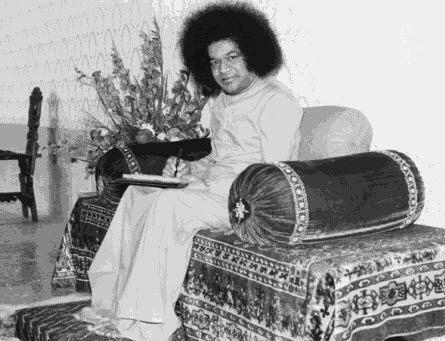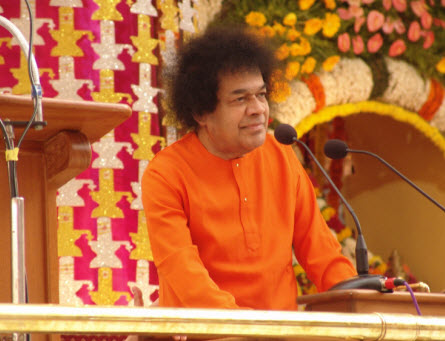ABOUT SSE
Sai Spiritual Education (SSE) is the program focused on building character and inculcating the five human values in children aged 6 to 17 years. The program is based on Sai Baba’s teachings of the universality of the human values – Truth, Right Action, Peace, Love and Nonviolence – and the consequent unity behind all religions and mankind.The children learn to inculcate the human values in their daily life, and to serve all fellow man equally treating them verily as God.
The goal behind the SSE program is to develop the spark of Divinity inherent in every child so the child blossoms into an honest and humble citizen of the country he / she resides in.
There are four broad tracks of learning imparted in Sai Spiritual Education.
| National Culture & Spirituality | Lessons to be learnt from our country of residence (USA) and of origin (any immigrant origin such as India, Carribbean etc.) |
| Sai Culture & Spirituality | Culture and traditions as followed by Sai Baba’s institutions and organization. |
| Practical Spirituality | Applying Sai Baba’s message in a practical context in daily life. |
| Value Based Spirituality | Lessons learnt from teaching of the five human values, the unity of all religions, and the brotherhood of man. |
Each class can adopt multiple strategies to demonstrate the lesson to the children. Taking the students through the cycle of Awareness –> Inspiration –> Experience –> Sharing provides for all around spiritual development.
| Awareness | Raise awareness about a topic or principle e.g., unity of faiths. This can be accomplished by providing basic information, examples, and descriptive presentations. |
| Inspiration | Use Sai Baba’s personal example and that of other spiritual and social leaders, so the children may be inspired and motivated to try to do the same in their life as well. |
| Experiential | Activity based session allowing the students to experience the message in addition to hearing about it. |
| Sharing | An important part of the cycle is to give time for students to share what they have experienced. After becoming aware, being inspired to try, and experiencing for themselves, the final step of sharing helps reinforce the message. |
-
-
The typical structure or flow of the class is as follows:
▪ Three OMs ▪ Silent Sitting ▪ Universal Prayer(s) ▪ Review of previous class ▪ Lesson plan for the day ▪ Q&A /Life Application /Assignment
▪ Om & 3 shanthisGroup 1 Objectives Ages 6 to 8 +
You must examine every story or account that you place before the children from the point of view of individual faith and social harmony. Does this lead the child to a better, more harmonious and more God-oriented life? That is the question you should ask yourself. Sathya Sai Speaks 9:1, 4 Rajahmundry, January 3, 1974
Develop faith in and a relationship with God.
Encourage respect for parents, teachers, others, and the environment.
Foster self-esteem and self-discipline.
Nurture truthfulness.
Promote ceiling on desires.
Cultivate a spirit of loving service to self, family, school, and others.
-
Group 2 Objectives Ages 9 to 11 +
Select stories that can be related in some way to the children’s background in life. Tell stories that will implant in the mind a genuine disgust for evil sights, evil entertainments, evil deeds and evil habits. Sathya Sai Speaks 7:69 Dharmakshetra, January 3, 1971
Demonstrate increasing integration of objectives from Group I.
Foster the understanding of Divinity in all.
Develop the faculty of discrimination.
Promote the practice of placing a Ceiling on Desires.
Foster understanding of the Unity of Faiths.
Encourage the practice of selfless service.
-
Group 3 Objectives Ages 12 to 13 +
Be convinced that there is a God guiding and guarding us. Remember Him with gratitude. Pray to Him to render you pure. Love all, serve all. Keep good company. Visit places of worship and saintly people. Sathya Sai Speaks 6:1 Guindy, Madras, January 1, 1967
Demonstrate increasing integration of objectives from Group II.
Develop awareness for the Atmic reality.
Strengthen moral living.
Emphasize selfless service.
Promote the practice of having a Ceiling on Desires.
Foster a sense of one’s role in society.
Facilitate learning to control negative emotions.
Provide practice in applying Spiritual Principles to concerns and challenges faced in the wider community.
Develop communication skills, in oral and written form, that reflect Spiritual Principles.
Develop a spirit of mutual trust and love, especially with parents and peers.
-
Group 4 Objectives Ages 15 to 17 +
Students must mold themselves into images of their teachers. Teachers must live their message and students must imbibe it and become it. The Atma (Divine Self) is the truth of truths. When one achieves this awareness all knowledge is added unto a person. Sathya Sai Speaks 9: 36 Dharmakshetra, January 6, 1975
Demonstrate increasing integration of objectives from Group III.
Encourage self-motivation and regular routines in spiritual practice.
Establish a sense of the interdependence of self and society; deepen an understanding of one’s role in and responsibility to society.
Increase ability to make dharmic choices when facing moral dilemmas.
Demonstrate human values by meeting life challenges with love, confidence, and understanding of others.
Establish habits of non-waste of resources and continue all disciplines of the
Ceiling on Desires program, including developing keen awareness of the effects one’s choices of media, companions, and activities.
Deepening the practice of controlling negative emotions.
Foster excellence in all endeavors without straying into egoistic competition.
Apply all aspects of the curriculum, and develop awareness of self as exemplar, through leadership roles.
Provide increasing emphasis on selfless, loving service through participating in local and regional service projects and activities. In addition, initiating service projects with age-group peers.
-
SSE Guidelines +
-

